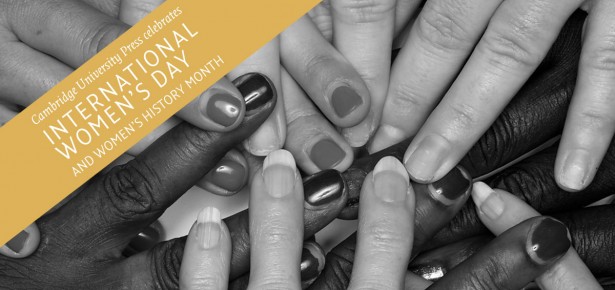
Looking back on careers that now span almost four decades, we share a good many stories about being women working through what has been an incredibly dynamic period in history. We remember when colleagues were explicitly bypassed for senior roles based solely on their gender. We also both share stories of the thrills and challenges of being among the very first women who took on having the lead career in their family – moving children, households, and spouses with their own careers across oceans and time zones. We can say to each other that we have made headway on issues, solved some important problems, mentored and coached the next generation and contributed not only to our organizations and professions but to the possibilities women now have in the world of work. We’ve also enjoyed our growth tremendously along the way.
Research shared in International Management Behavior (Henry W. Lane and Martha L. Maznevski, 2019) shows that diversity provides the potential for better performance, and we’ve experienced that as well. It’s especially true in complex situations, and no one denies that the complexity of interdependence on a crowded planet is now raising questions humanity has never faced before. People with different lived experiences, personalities, biologies, and types of knowledge bring different perspectives to these challenges. Perhaps more importantly, they also bring different questions, and confront assumptions differently. When groups and organizations really engage these differences to build new ideas, everyone benefits. As demographic minorities (women) in organizations dominated by men and men’s systems, we know that we’ve brought unique perspectives, and worked together with our colleagues to create tremendous innovation and benefit for students, clients and systems. We’ve also seen this dynamic with the people we teach, research with, and consult. Great energy gets created, as well as a sense of fulfillment.
As educators and consultants, we acknowledge that progress has been made. As we head toward 2020, though, we find ourselves curiously puzzled that the progress hasn’t been greater. Pay equity still remains a “target” to be achieved. Of 189 economies assessed by the United Nations in 2018, 104 economies still have laws preventing women from working in specific jobs, 59 economies have no laws on sexual harassment in the workplace, and in 18 economies, husbands can legally prevent their wives from working. In 2018 more women earned doctoral degrees than men around the world, yet continue to make approximately 80% of the income. Female enrollment in full-time MBA programs rose to 37.8 percent in 2018, but a CNNMoney analysis shows women hold just 5% of the CEO jobs in the S&P 500 and the pipeline of rising stars behind them is thin. We wonder why the clear organizational and societal benefits of gender diversity haven’t translated into more balance in organizations and leadership?
We think part of the reason is that the very complexity that needs diversity, is also threatening to leaders’ and organizational systems’ own stability and confidence. Business leaders find it more difficult to plan strategy and promise expectations in a world that changes so quickly, and they’re being held accountable by shareholders and stakeholders who have little patience with the volatility. This is scary, and creates enormous stress. In an environment of personal fear, leaders naturally tend to make decisions they think are safe, in the few arenas over which they feel they have control. For example, imagine a Senior VP of New Product Development being promoted to Executive VP of a larger portfolio and looking with some trepidation at the complexity of the larger responsibilities in the company’s more competitive environment. To replace themselves in the Senior VP position, the leader is likely to promote someone they feel comfortable with, someone who’s not a risk. More often than not, this is someone who “would do pretty much what I would do”, or “someone like me”. The potential benefits of predictability in one of the few elements the leader can control, outweigh the potential benefits of diversity in solutions. It’s a subtle process, not intended to decrease diversity or limit the potential of demographic groups, and it’s no one’s fault. But a series of decisions like this end up creating a system that has lower diversity.
Sometimes just raising awareness about the role of a need for predictability can help leaders consciously think more carefully about their decisions, making different trade-offs. We’ve seen this discussion change leaders’ decisions individually, and in whole organizations. They acknowledge the challenge of the environment and its demands on individual leaders, then embrace the potential of different perspectives to address challenges and create opportunities collectively. They end up becoming more diverse, and see the benefits. If the conversation is just about diversity and its immediate benefits, it may not lead to change. But if the conversation is about the uncertainty in the environment and its impact on leaders and organizations, diversity becomes a positive means to an end that raises everyone’s ambition. This is one way to address the curious puzzle of slow progress.
As we approach International Women’s Day on March 8, we reflect on our decades in the world of work, our next decades, and our hopes for what may still be accomplished in our lifetimes. We hope we can help leaders and their organizations overcome the puzzling reluctance to engage diversity at all levels. Working toward achieving gender equality and women’s empowerment under the 2030 Agenda for Sustainable Development is not just an honorable goal to be framed on a wall or discussed once a year. Empowering women to participate fully in economic life is essential to building stronger economies and improving the quality of life for us all. The private sector and educators both have central and active roles to play. Women and men, individuals who self identify as other, and all human beings hoping for a brighter future, we all have a role to play.
Latest Comments
Have your say!